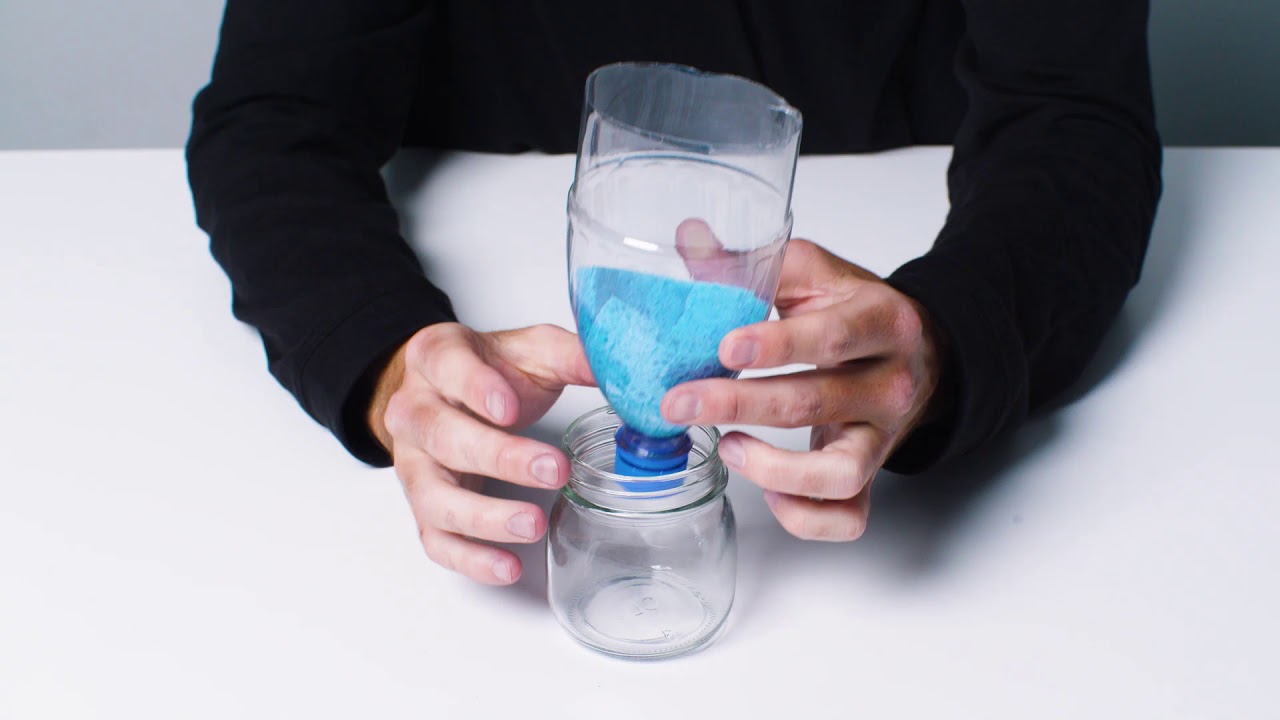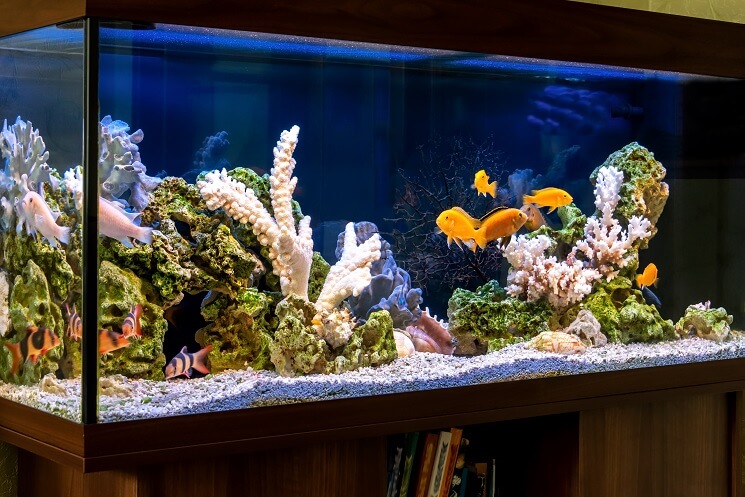Purify Your Saltwater Tank: Make Tap Water Safe in 6 Easy Steps
To make tap water safe for saltwater aquariums, use a water conditioner and a reverse osmosis (ro) filter. These tools will remove harmful chemicals and impurities from tap water.
Saltwater aquariums require careful attention and maintenance to ensure their inhabitants thrive. One of the most critical steps in creating a healthy environment is to make tap water safe. Tap water contains harmful chemicals and impurities that can harm the delicate and sensitive marine life in the aquarium.
Using a water conditioner, such as prime or amquel, will neutralize chlorine, chloramines, and heavy metals. Additionally, running tap water through a reverse osmosis (ro) filter removes other impurities, such as phosphates and nitrates. By using these tools in combination, you can ensure that the tap water you use for your aquarium is safe and healthy for your marine pets.

Credit: www.healthline.com
Importance Of Purifying Tap Water For Saltwater Tanks
Understand The Importance Of Saltwater Tank Water Quality
Maintaining the quality of water is crucial for the health and well-being of your saltwater aquarium inhabitants. Any changes in the quality of water can cause stress, disease, and even death to your marine creatures. You need to monitor water conditions regularly to ensure that they remain in a stable and healthy range.
Some of the essential factors that influence water quality include temperature, ph level, salinity, and nutrient levels.
Identify The Hazards Of Untreated Tap Water
Tap water is not safe for saltwater aquariums due to the presence of chlorine, chloramine, and heavy metal compounds. Chlorine and chloramine used to disinfect water supplies can kill beneficial bacteria and other organisms present in your tank, while heavy metals such as lead and copper can be toxic to fish and other marine animals.
Tap water also contains other chemicals such as nitrates, phosphates, and silicates that may promote the growth of unwanted algae.
To create a safe environment for your aquarium inhabitants, it is imperative to treat tap water by removing harmful chemicals and reducing dissolved solids, nitrates, and phosphates.
Explain The Importance Of Purifying Tap Water
Purifying tap water is the most effective way to make it safe for saltwater aquariums. Here are some of the benefits of using purified water:
- Purified water is free from chlorine, chloramine, and heavy metals that can harm your aquarium inhabitants.
- Purified water has a neutral ph and no additional chemicals that can cause fluctuations in ph levels, which is critical for the health of your marine creatures.
- Purified water has low levels of dissolved solids, reducing the chances of the growth of unwanted algae and aquatic plants.
- Purified water is an ideal choice for creating a stable and consistent environment in your saltwater tank.
To purify tap water, you can use various methods such as reverse osmosis (ro), deionization (di), or a combination of both (rodi). The rodi system uses a membrane to filter water and remove impurities, while the di system uses resin to remove dissolved solids.
Using purified water ensures that your saltwater aquarium thrives with healthy marine creatures and lessens the risk of disease and death.
6 Easy Steps To Purify Tap Water For Your Saltwater Tank
If you’re a saltwater aquarium enthusiast, then you understand the importance of having clean water for your aquarium inhabitants to thrive. Tap water may contain pollutants, chemicals, and other impurities that could harm your aquarium’s inhabitants. However, there are ways to purify your tap water so that it’s safe for your saltwater tank.
In this post, we’ll explain the 6 easy steps to purify tap water for your saltwater tank.
Step 1: Choose The Right Type Of Purification System
Choosing the right type of purification system depends on your tap water’s condition. Here are a few options to consider:
- Reverse osmosis (ro) unit: This system is ideal for removing tds (total dissolved solids), chlorine, and other impurities. It’s perfect if you have high levels of tds in your tap water.
- Deionization (di) unit: This system removes mineral ions from the water that may cause issues in your aquarium, such as phosphate and nitrate.
- Carbon filtration: This method is suitable for removing chlorine and other impurities that may change the water’s taste or color.
Step 2: Install The Purification System
Once you’ve chosen the purification system, it’s time to install it. Follow the manufacturer’s instructions to set it up correctly. You may need to drill a hole in the wall or install a faucet adapter, depending on the system type.
Step 3: Prepare The Tap Water For Purification
Before you start the purification process, let your tap water flow for a few minutes to flush out any stagnant water. This water may contain impurities that have been sitting in your pipes for a long time.
Step 4: Initiate The Purification Process
After preparing the water, it’s time to initiate the purification process. Turn on your purification system and let the water flow through it. The time it takes to filter the water depends on the system type and your water flow rate.
Once the process is complete, the purified water will be stored in a separate container.
Step 5: Check Water Condition And Adjust Purification Process
Now that you’ve got your purified water, it’s time to check its condition. Use a tds meter to check the water’s tds level and ensure it’s below 10-15 ppm. If it’s higher than the recommended level, adjust the purification process accordingly.
Step 6: Store The Purified Water
The final step is to store the purified water. You can store it in a separate container until you’re ready to use it in your aquarium. It’s essential to keep the container clean and sterile to prevent any contamination.
Following these 6 easy steps will ensure that you have safe and clean water for your saltwater aquarium. Remember to choose the right type of purification system, install it correctly, prepare the tap water, initiate and monitor the water purification process, check its condition and adjust the process accordingly, and finally, store the purified water correctly.
Types Of Purification Systems
Reverse Osmosis (Ro) System
One of the most widely used techniques to purify tap water for saltwater aquariums is the reverse osmosis (ro) system. In this system, a semi-permeable membrane is used to eliminate up to 99% of impurities from water. Water pressure forces water through the membrane and removes impurities such as heavy metals, minerals, chlorine, and bacteria.
The ro system can be used alone, or with other filters like carbon block filters, or deionization.
Deionization (Di) System
The deionization (di) system is another popular technique utilized to purify tap water for saltwater aquariums. Unlike the ro process, it uses synthetic resin beads to extract all the ions from the water. The di system removes impurities from the water, including nitrates, phosphates, and silicates, making it an excellent choice for aquarium owners who want to reduce these nutrients.
Water flows through two chambers of the di unit, filled with resin beads, that remove impurities and release pure water.
Carbon Block Filter System
The carbon block filter system is a filtration system utilized to remove chlorine, and chloramine, and some organic impurities from water. The filter works by absorbing impurities onto its surface and holding them there. The activated carbon block (acb) filter system comes in different sizes of cartridges to fit the user’s needs and has the added benefit of removing impurities that can cause unpleasant odors from tap water.
Activated Alumina Filter System
The activated alumina filter system reduces fluoride concentration from the water and removes impurities, like arsenic and selenium, to make it safer for marine life. The filter works by reducing the number of ions, even at low levels, that may remain in ro or di filtered water.
It’s simple to install and has a long lifespan.
Mixed Bed Filter System
The mixed bed filter system is a two-in-one filter system that combines the benefits of both ro and di systems to release pure, deionized water with no impurities. It removes mineral ions, carbonates, and other impurities missed during the ro or di process, producing pure, mineral-free water for saltwater aquariums.
The mixed bed filter system is an ideal choice for discerning aquarium owners who only want the purest possible water with zero impurities.
How Each Purification System Works
Having a saltwater aquarium can be both exciting and challenging, especially when it comes to taking care of the creatures living in the tank. One of the primary concerns of aquarium owners is ensuring that the tap water they use is safe for their aquatic animals.
Fortunately, there are various purification systems available in the market today that can help you achieve this.
Overview Of Ro Systems
Reverse osmosis (ro) systems are increasingly popular among aquarium owners because of their efficiency in removing impurities from tap water. Some of the key points to remember about ro systems include:
- Ro systems use a semi-permeable membrane to remove impurities from tap water, leaving behind only clean water with low levels of total dissolved solids (tds).
- Ro systems may also have additional filters, such as sediment filters and carbon filters, to help remove larger particles and chlorine found in tap water.
- Ro systems can filter up to 99% of water impurities, ensuring that tap water is safe for saltwater aquarium.
Overview Of Di Systems
Deionization (di) systems are another popular choice for aquarium owners, particularly for removing mineral ions from tap water. Here are some essential points to remember about di systems:
- Di systems work by using resins to remove mineral ions from tap water, producing purified water with no tds.
- Di systems are highly efficient in removing silica, nitrates, and phosphates from tap water.
- Di systems are often used as post-filters to ro systems to produce ultra-pure water, which is ideal for sensitive aquatic animals.
Overview Of Carbon Block Filter Systems
Carbon block filter systems are essential in removing chlorine, volatile organic compounds, and other chemicals found in tap water. Here are some key points to remember about carbon block filter systems:
- Carbon block filters use activated carbon filters to attract and remove impurities found in tap water, such as chlorine and unwanted chemicals.
- Carbon block filter systems can improve the taste and smell of tap water.
- Carbon block filter systems are common in aquariums because they help remove chemicals that can harm fish and other aquatic animals.
Overview Of Activated Alumina Filter Systems
Activated alumina filter systems are another type of filter that uses a porous aluminum oxide to remove impurities from tap water. Here are some key points to remember about activated alumina filter systems:
- Activated alumina filters work by absorbing fluoride, arsenic, and other impurities commonly found in tap water.
- Activated alumina filters can filter up to 99% of fluoride and other unwanted impurities.
- Activated alumina filters are typically used in conjunction with reverse osmosis systems to remove additional fluoride impurities from tap water.
Overview Of Mixed Bed Filter Systems
Mixed bed filter systems are comprised of both anion and cation resins. In aquariums, mixed bed filter systems work similarly to di systems by removing unwanted mineral ions found in tap water. Here are some essential points to remember about mixed bed filter systems:
- Mixed bed filter systems use both anion and cation resins to remove mineral ions effectively.
- Mixed bed filter systems can produce ultra-pure water with no tds.
- Mixed bed filter systems are commonly used in conjunction with ro systems to produce highly purified water ideal for delicate aquatic animals.
Keeping a saltwater aquarium requires attention to detail and investing in the proper equipment to ensure that your aquatic animals thrive. By selecting the right purification system for your aquarium, you can ensure that your tap water is safe and free of impurities that can harm your animals.
Maintaining Purification Systems
The Importance Of Regular Maintenance
Maintaining purification systems is crucial for ensuring the safety of your saltwater aquarium. Every device requires some level of upkeep, but it’s particularly important to check the purification system regularly. Here are some key points about the importance of regular maintenance:
- Regular maintenance ensures that your purification system works effectively and removes harmful contaminants from the water.
- If the purification system is not maintained correctly, it can get clogged over time, leaving harmful impurities that could kill your fish and other aquatic animals.
- Regular maintenance helps extend the life of the purification system, which saves you from costly replacements.
Recommended Cleaning Procedures
Cleaning your purification system is essential to keep it running at peak performance. Here are some recommended cleaning procedures:
- Regularly check the manufacturer’s instructions regarding cleaning and maintenance of your purification system. Knowing the guidelines is the crucial first step in ensuring that the device works efficiently and effectively.
- Clean all parts of the purification system regularly, such as the membrane filter, carbon filter, and prefilters. Dirty filters lose effectiveness over time and need to be replaced often.
- Use water mixed with some vinegar to clean the purification system, as it effectively removes built-up minerals, dirt, and debris.
Signs That Indicate The Need For Maintenance
Keeping your purification system working well requires timely maintenance to avoid issues. Here are some signs that indicate you need to maintain your purification system:
- If your aquarium water starts to turn cloudy or has an unusual odor, it may indicate that your purification system needs cleaning and maintenance.
- Be alert for any strange sounds coming from the purification system — this may mean that there is a build-up of debris or other impurities in the device.
- If your aquarium’s water quality tests show that it’s not clean, it’s likely that your purification system needs cleaning and maintenance.
High Water Quality Indicators
High water quality is essential to the health of your saltwater aquarium. Here are some indicators of high water quality:
- The presence of aquatic plants, snails, and other aquatic life forms.
- A clean and clear water column with low levels of contaminants such as ammonia, nitrate, and phosphate.
- No algae buildup, and a healthy fish population that’s active and exhibits vibrant color.
By following these guidelines, you can maintain water-purification systems to ensure that your saltwater aquarium is a safe and healthy environment for your fish and other aquatic life.
Frequently Asked Questions On How To Make Tap Water Safe For Saltwater Aquarium
Can I Use Tap Water For My Saltwater Aquarium?
Yes, but you need to treat it to remove harmful chemicals and impurities.
What Should I Use To Treat Tap Water For My Aquarium?
You can use a water conditioner or a reverse osmosis (ro) system to treat tap water.
How Often Should I Change The Water In My Saltwater Aquarium?
It’s recommended to change 10-20% of the water every 2-4 weeks to maintain a healthy aquarium.
What Are Some Signs That I Need To Change The Water In My Aquarium?
Cloudy water, excessive algae growth, and a strong odor are signs that you need to change the water in your aquarium.
Conclusion
As aquarium owners, ensuring the safety of our marine pets should be a top priority. And one way to achieve this is by making tap water safe for our saltwater aquariums. This can be done through various methods such as using water conditioners, reverse osmosis systems, and adding salt mixtures.
However, it is important to note that different marine species may have different water requirements, so it is crucial to research and understand their needs. With the right techniques and knowledge, you can provide a safe and healthy environment for your aquarium inhabitants.
It may be a daunting task at first, but with patience and practice, you can become an expert in maintaining a thriving saltwater aquarium. Remember, the health and happiness of your marine pets depend on your care and dedication.






